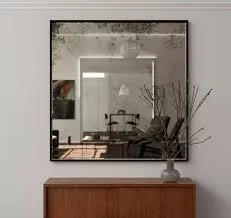

The Versatility and Benefits of Tinted Mirror Glass
In the contemporary architectural landscape, tinted mirror glass has emerged as an innovative solution that combines aesthetics and functionality. With its unique characteristics, tinted mirror glass is increasingly used in various applications, ranging from commercial buildings to residential homes, automotive, and interior design. This article explores the versatility and benefits of tinted mirror glass, highlighting why it has garnered popularity among architects, designers, and homeowners alike.
Understanding Tinted Mirror Glass
Tinted mirror glass is a specialized type of glass that incorporates a reflective surface to create a mirror-effect while also offering a tinted appearance. The tint can vary in color, allowing for a range of designs to suit different tastes and architectural styles. The reflective coating is typically made from a thin layer of metal or metallic oxide, allowing the glass to maintain its transparency while minimizing visibility from the outside. This dual-functionality is what makes tinted mirror glass such a coveted material in design.
Aesthetic Appeal
One of the primary reasons that tinted mirror glass is favored in modern design is its stunning aesthetic appeal. The reflective quality of the glass adds depth and a sense of spaciousness to any environment. Whether used in facades, interiors, or decorative features, tinted mirror glass has the ability to transform ordinary spaces into striking visuals. The varied tints can complement any color palette, creating harmony in design while enhancing the overall ambiance.
Energy Efficiency
Beyond its beauty, tinted mirror glass offers significant energy-efficient advantages. By reflecting solar energy, it reduces heat gain in buildings, which can lead to lower cooling costs during hot months. This energy-saving property is especially beneficial in regions with high temperatures, helping to maintain a comfortable indoor climate. Moreover, with growing environmental awareness, many builders and architects are leaning towards materials that ensure sustainability and energy efficiency in their projects.

Privacy Without Compromise
Privacy is a critical factor in modern architecture, especially in urban environments where buildings are often in close proximity. Tinted mirror glass provides an effective solution to this issue. The reflective surface minimizes visibility from the outside during daylight hours, allowing occupants to enjoy natural light without sacrificing their privacy. This feature is particularly advantageous for residential buildings, offices, and hospitality venues where privacy is paramount.
Durability and Maintenance
Another standout feature of tinted mirror glass is its durability. Unlike traditional glass, which can be more susceptible to scratches and damage, tinted mirror glass is treated to withstand the rigors of daily use. This makes it an ideal choice for high-traffic areas and public spaces. In terms of maintenance, tinted mirror glass requires relatively low upkeep. Regular cleaning with non-abrasive materials keeps it looking pristine without the need for specialized products.
Applications
The versatility of tinted mirror glass allows for a wide range of applications. In architecture, it is commonly used for building facades, curtain walls, and skylights, creating striking visual effects while serving practical functions. In interior design, tinted mirror glass can be employed in furniture, such as tabletops and accents, as well as in decorative panels and partitions that enhance the aesthetics of a space. Additionally, in the automotive industry, tinted mirror glass is utilized in car windows and sunroofs, offering both style and function.
Conclusion
Tinted mirror glass stands out as a sophisticated choice for those looking to merge style with practicality. Its aesthetic appeal, energy efficiency, privacy benefits, durability, and diverse applications make it a material of choice for architects and interior designers aiming to create stunning and functional spaces. As trends continue to evolve, tinted mirror glass is likely to remain a key component in innovative design solutions, reflecting the ongoing pursuit of beauty and efficiency in modern architecture. Whether for a new residential project or a commercial endeavor, the inclusion of tinted mirror glass can undoubtedly elevate the overall design and functionality of any space.